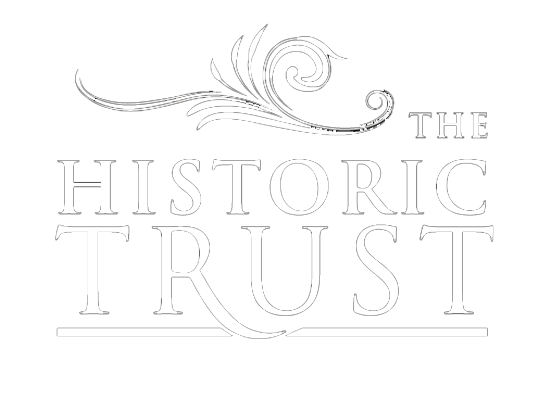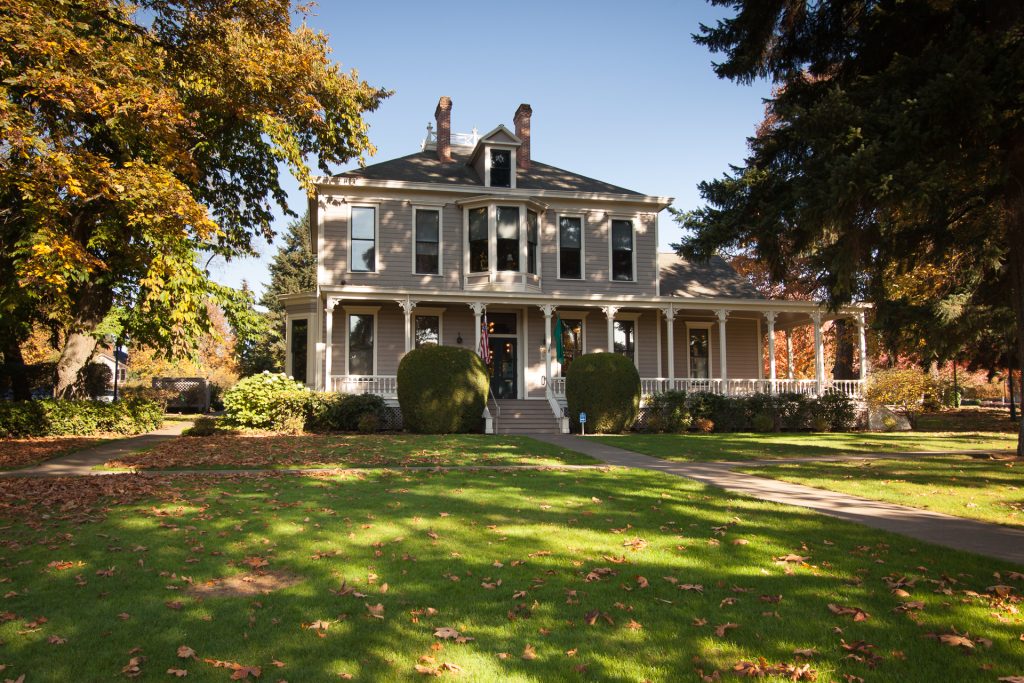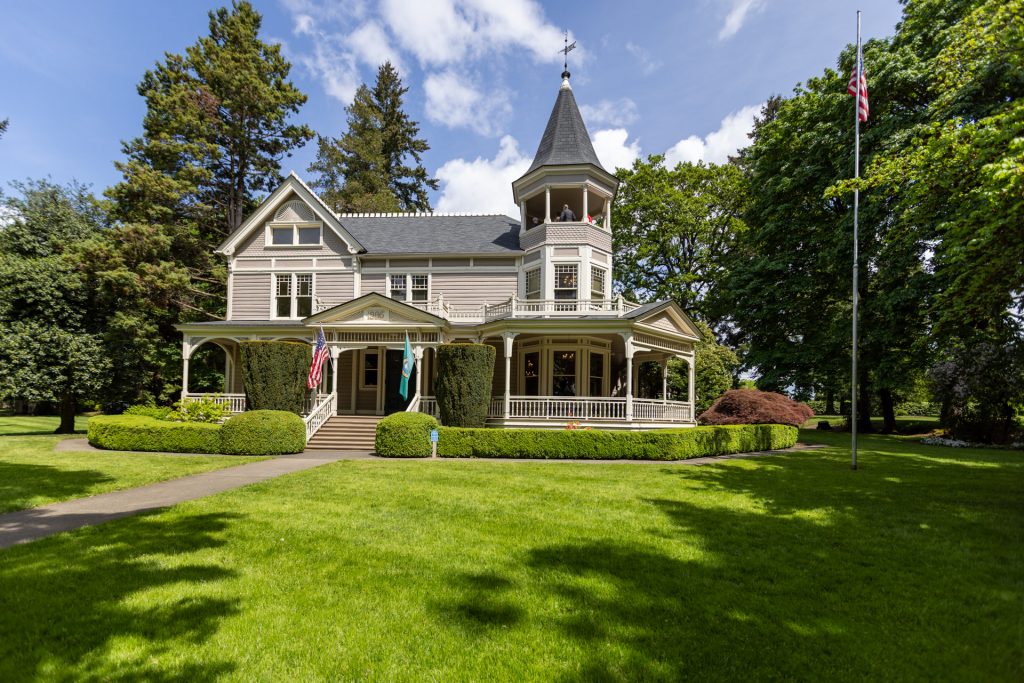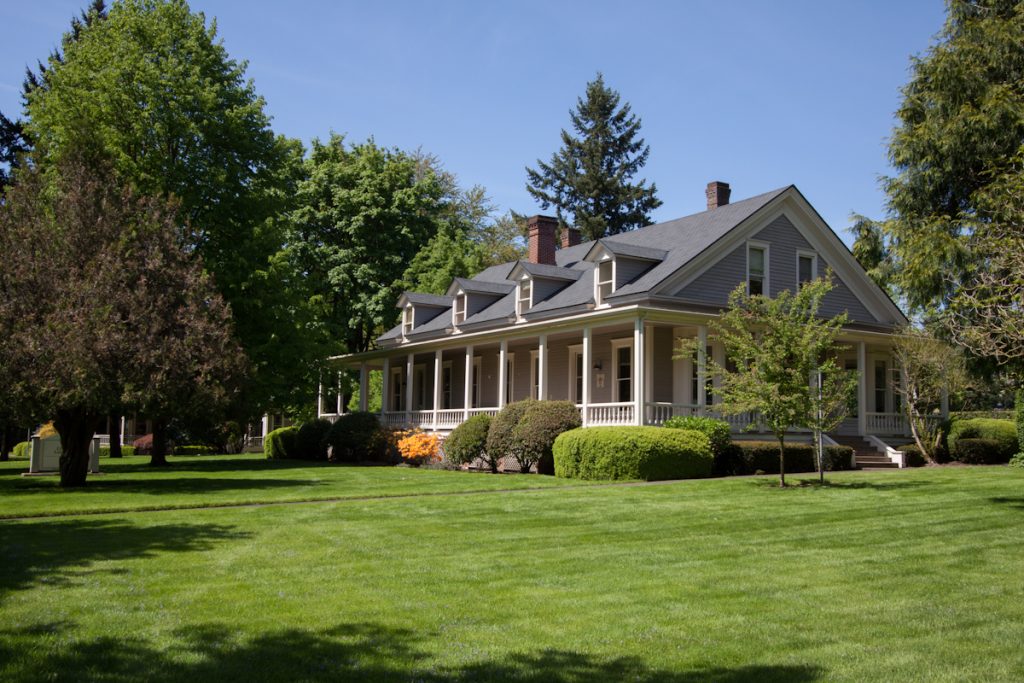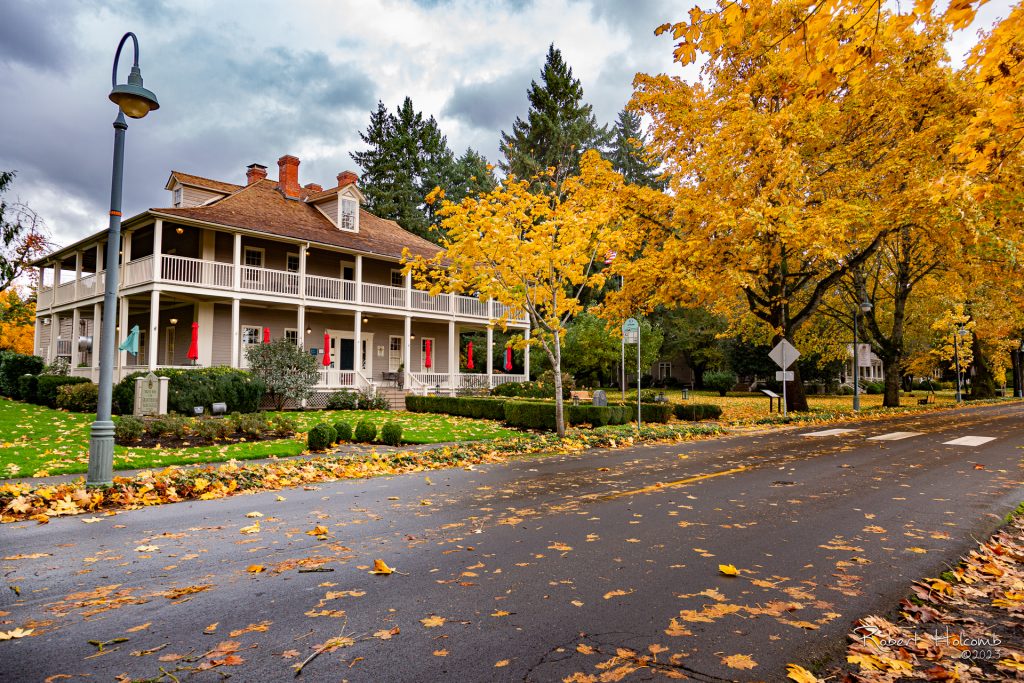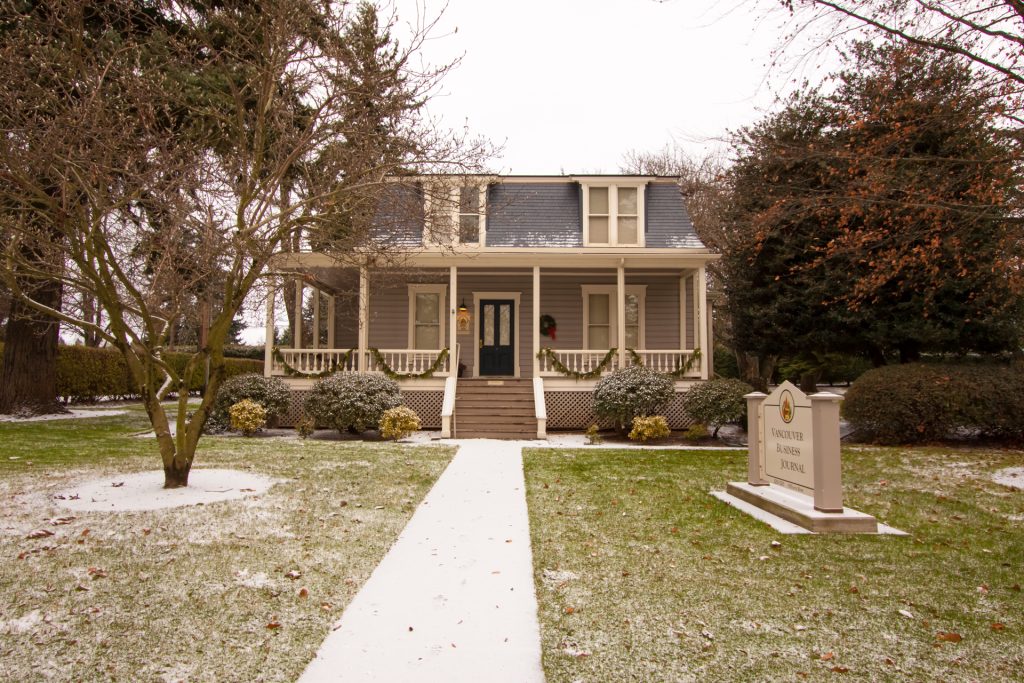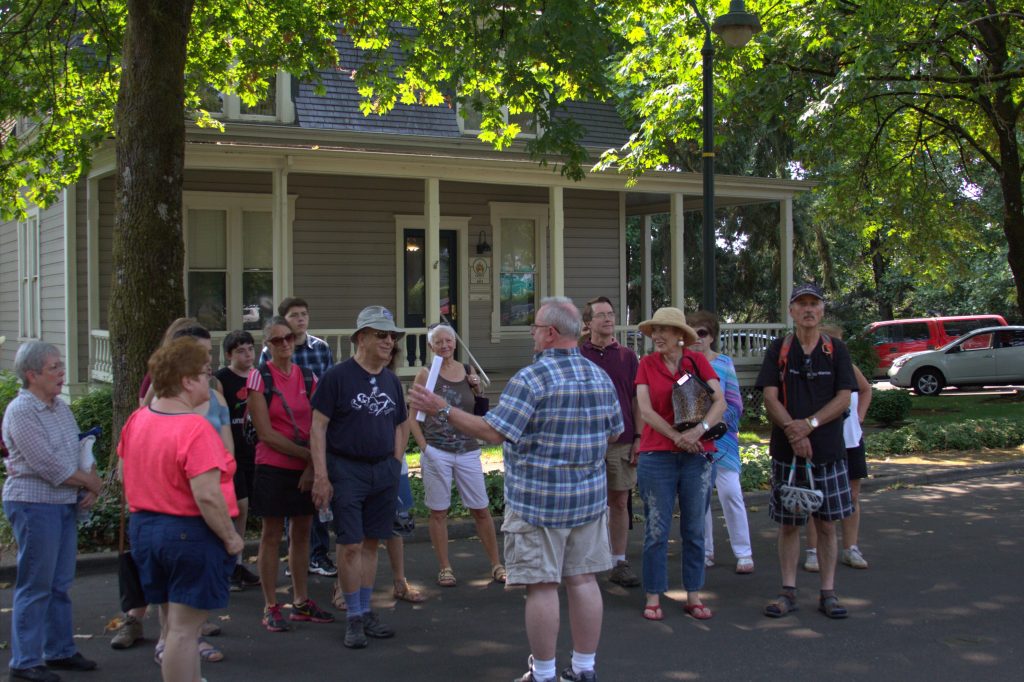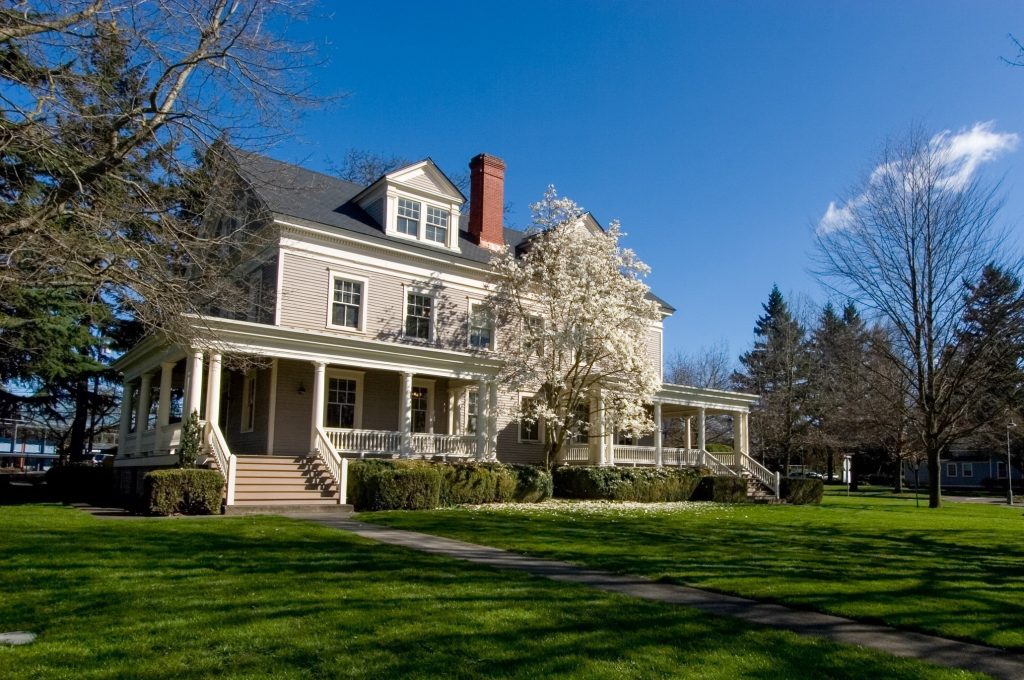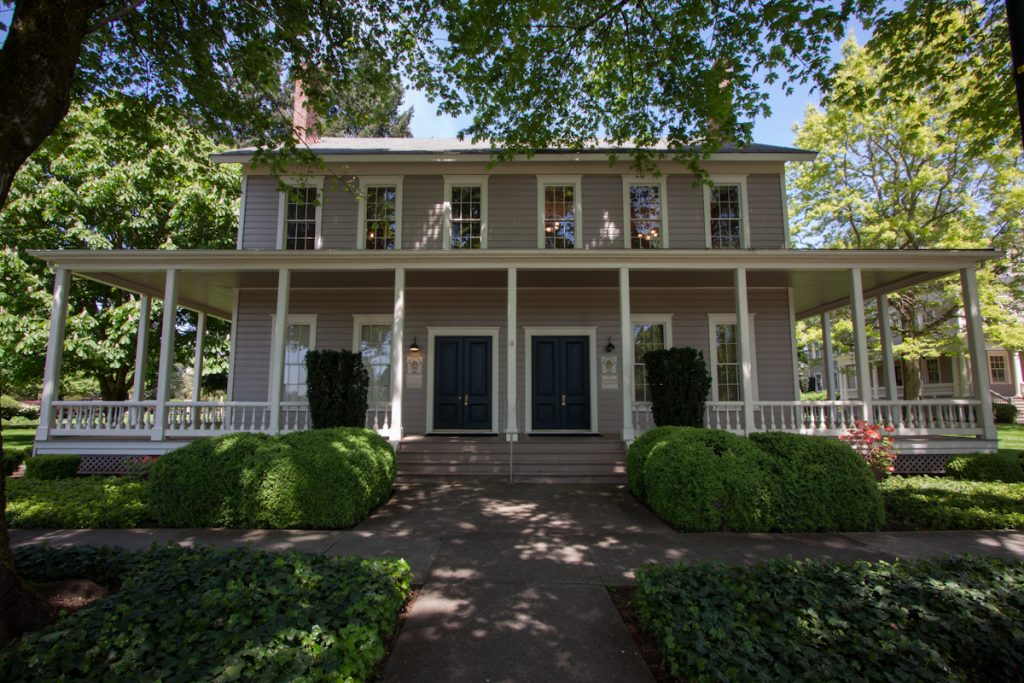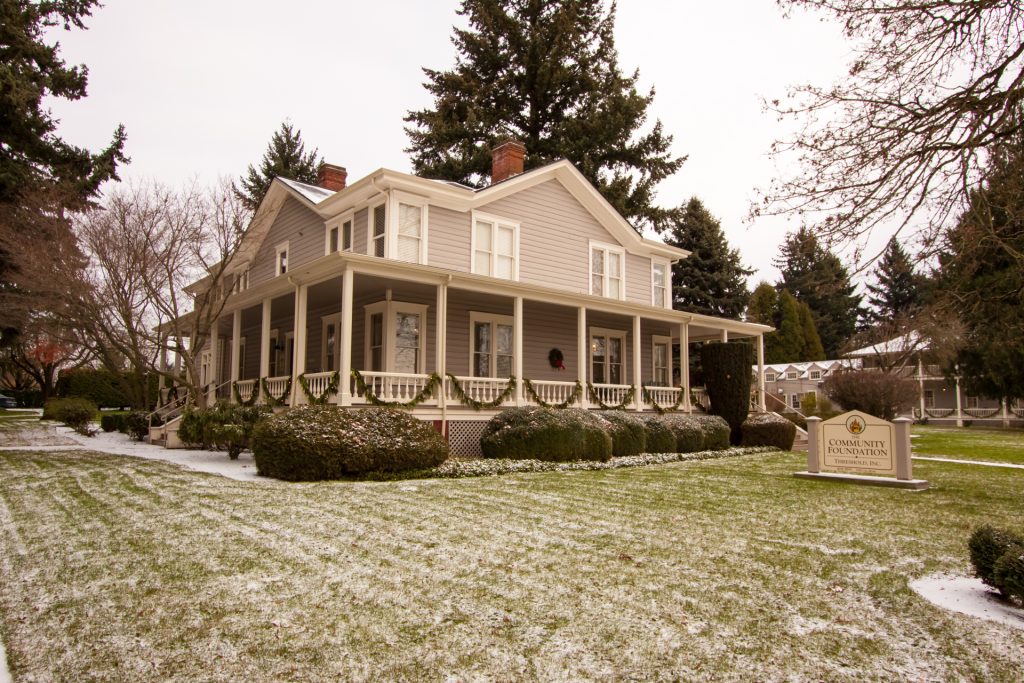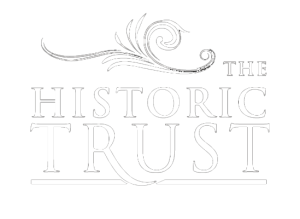Officers Row Preservation Memories
Oral History Project
Officers Row residences
Since 1988, Vancouver’s rehabilitated Officers Row has been welcoming people to live, work, commemorate, and celebrate in the midst of history. Here are memories of some of the people who made that possible.
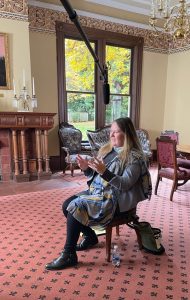
Julie Garver during interview
The Historic Trust has documented via oral histories the story of the inspiring public effort and leadership required to preserve and re-use the former Officers Row of Vancouver Barracks. Nine individuals who were involved with the ground-breaking preservation project in the late 1980s, and the rehabilitation of the Howard House in the 1990s, shared their recollections over two days of interviews and videorecording on November 4 and 5, 2024. The Trust, and the larger community, are grateful to these people for their dedication to bringing Officers Row back to life and to passing it on to future generations.
This oral history recordation was undertaken as part of Vancouver’s commemoration of the 250th anniversary of the signing of the Declaration of Independence in 2026. The interviews were conducted by Heritage Research Associates on November 4 and 5, 2024 at the Marshall House on Officers Row. Videography services were provided by Flowerhead Productions. This project was supported in part with funds from the Clark County Historical Promotion Grants Program. The Historic Trust is grateful for that support and the gifts of generous donors who made this possible. Photos courtesy Robert Holcomb.
The information posted is for educational purposes. The content displayed on this web page, within the linked interview transcripts, and on the interviews posted on the Trust’s YouTube channel is the property of The Historic Trust. Please call the Trust at 360-992-1800 to ask permission to reuse, republish, or reprint the content. Opinions expressed and memories recalled are those of the interviewees. Quotes below from the interview transcripts are summarized for clarity.
Click HERE to access the interviews in their entirety.
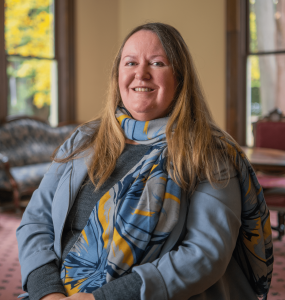
Julie Garver
Project Role: Intern and project manager
“We wanted to impart that feeling of history, that feeling of welcoming. It’s not really about the buildings; it’s about the people. Not only the people that lived here originally but the people now in the community. What really made Officers Row happen is all of the amazing people who were willing to stand up and say, this place matters.”
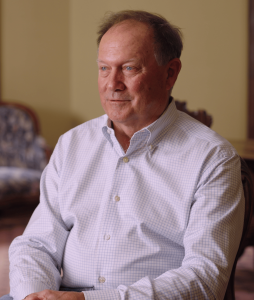
Mike Greenslade
Project Role: Field Superintendent
“When we started, they were pretty much abandoned homes. It was great to see a group of people that cared about this treasure. The City of Vancouver raised the money and did it at the right time. Everybody was passionate about the project and doing it right. They really cared about saving the jewel of Officers Row.”
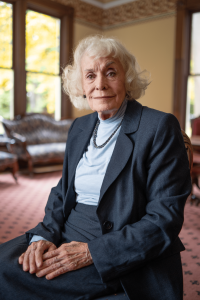
Pat Jollota
Project Role: Advocacy and education
“We joined together, and we lobbied. We annoyed our elected officials in Washington, DC. We demanded. We pled. We converted Senator Slade Gordon, who became a strong proponent for us. Oh, we telephoned. We sent petitions. We got many, many citizens on our side. After all the advocacy, we were in a meeting of our committee in city hall. The mayor was in Washington, DC., and he called and said, ‘I have good news and I have bad news. The good news is, we have the Row. For a dollar. The bad news is, we have the Row. We have 21 white elephants marching nose to tail down Evergreen, and now our challenge is what to do with them.’”
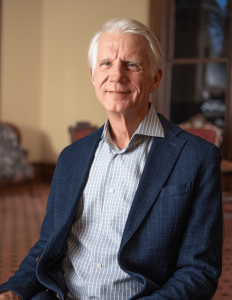
Craig Keist
Project Role: Landscape architect
“Looking back on it, one of the most interesting things is that it was so hard to develop a multi-use project. They had residences next to buildings that were supposed to be commercial. They were a bit ahead of their time in trying to use the space efficiently and in encouraging the community here. The landscape here does make the setting. The scale of these trees is very important to the amenity that Officers Row provides. Where else can you have such wonderful broad, big trees? We know that they will be here for a long time, and many of them were here a long time before.”
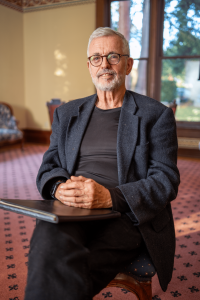
Kelly Punteney
Project Role: City of Vancouver landscape architect with Central Park Programs
“It wasn’t only the job, but it was a passion of mine to see this be successful. City Council member Ethel Lehman and a whole group of people got together and wanted to see what we could do with the entire original military base, which was about a mile square, the riverfront to Fourth Plain. It’s so important to capture this history of one of the finer moments of Vancouver. I want the model we did to live on because I think other communities could learn from this.”
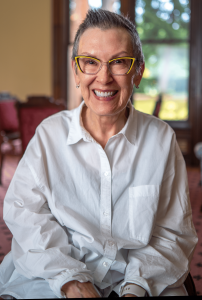
Ann Roseberry
Project Role: One of the first residents on the rehabilitated Officers Row
“I read that the buildings were being rehabbed and were going to be rented. I was calling the city at least once a month. ‘Are they ready? When are they going to be ready?’ I just thought they were so cool. The houses were amazing and the big trees. The renovation had been done beautifully. You had these big windows and traditional accents that were still there. This is not just special, but extraordinary.”
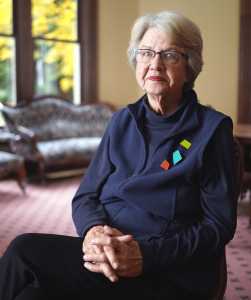
Gayle Rothrock
Project Role: Fundraiser and advocate
“I was first introduced to Officers Row when I was a child growing up in Portland and my parents wanted to come over and visit relatives. They liked driving through what we know as Officers Row. I realize mine is perhaps an unusual story, having actually worked in one of the buildings when it was still dilapidated, and then having the privilege of being an advocate for public funding. This has so much regional history, and it’s something that simply couldn’t be let go. We needed to do our best in modern times to conserve the spaces but be able to make economically reasonable use of them. This was of profound historic meaning and importance, and a remarkable chance to get some housing and some businesses and some public spaces made available with respect and reverence for an incredible historic scene.”
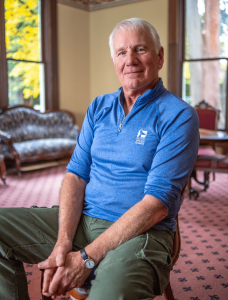
Thomas Ryll
Project Role: Row Resident prior to rehabilitation
“This entire Row, as we know it today, was reserved for the senior staff of the VA Hospital. My father, as the director of engineering was able to live here. He had to maintain a bunch of crumbling old buildings. My house was a creaky old dilapidated structure. We knew it was old but we didn’t really have that sense of history that is evident today. As kids we were kind of envious of kids who had wall-to-wall carpeting. It’s like hardwood floors, they were nothing. We lived in a house with hardwood floors everywhere. It’s like ‘yeah, but they have a shag carpet. That’s cool’. The buildings were so well done. The transformation was enormous. It’s one of the prettiest places around today.”
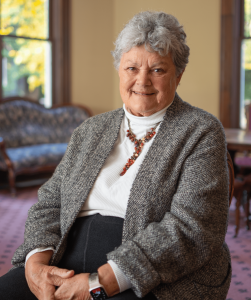
Patricia Stryker
Project Role: City of Vancouver Central Park Coordinator and Property Manager
“I first got involved in this whole area because I was hired as the Central Park coordinator. My job then was to get 11 different agencies—federal, state, local and private—working together to commit to the plan. The heart of that plan was basically Officers Row. Major cooperation made it all work. People really always cared about this place. Many who’d grown up in Vancouver had driven on Evergreen their whole lives and they would come and give ideas. We implemented where we could, and got a plan approved by all the stakeholders. Working with people was the key thing. We had the support to do it and we did.”
Over the decades since rehabilitation began, Row preservation has served as a model for countless other projects around the region and nation, and is an enduring example of collaborative civic vision and cooperative management. The insightful decisions of individuals interviewed created the framework for operations and set the high standards for stewardship which still exist today on the part of the City of Vancouver as owner and The Historic Trust as manager. The Row today is a signature expression of Vancouver’s ongoing commitment to preservation of local heritage and broadly sharing it with the community and visitors.
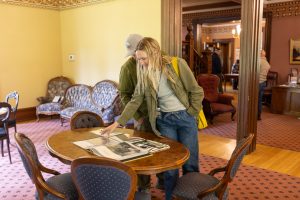
Tourgoers enjoying a visit to the Marshall House
Concerned and farsighted people initiated productive public conversations in the 1970s about how to save the Row for community use, and nominated it to the National Register of Historic Places. They continued to advocate for its preservation during the heritage-infused era of the 1976 commemoration of the American bicentennial, and were joined by others who ultimately sought to complete the rehabilitation in time for the Washington state centennial in 1989. The enduring civic vision for preservation and adaptive-reuse has now continued to the American semiquincentennial, in recognition of which this project was conducted.
